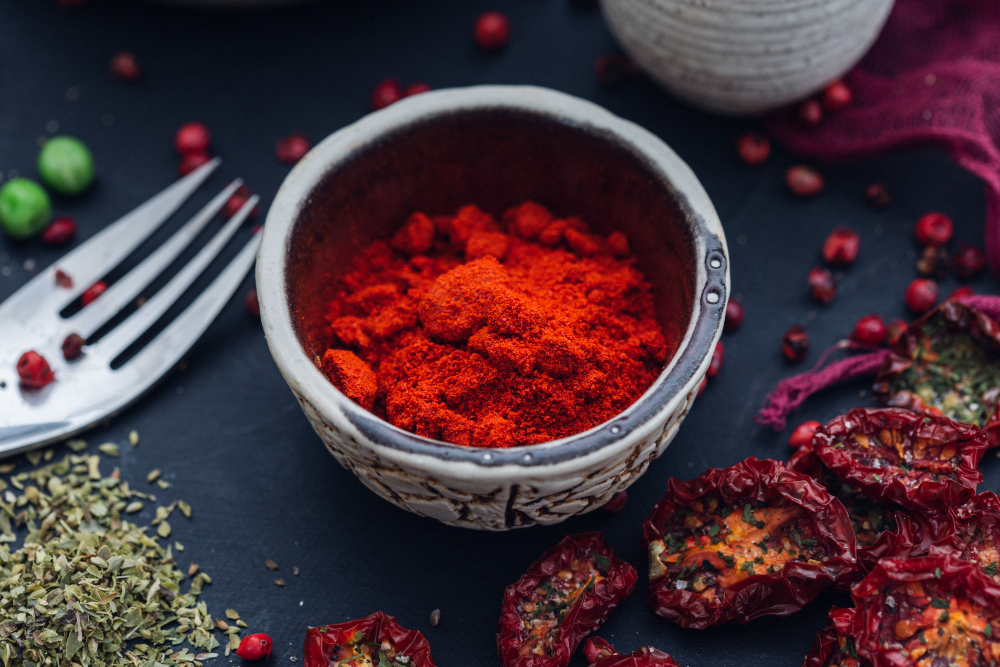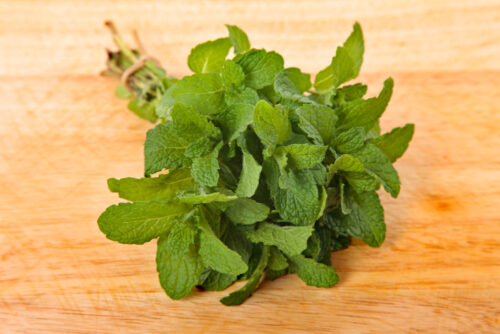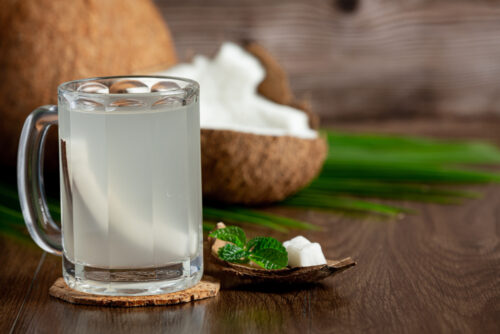Imagine you’re marinating the chicken, pouring in all the right ingredients, but when it’s time to add sweet pepper, you realize you’re out of sweet peppers.
Now that the havoc has been unleashed, what are you going to do? What will be the best substitute for sweet pepper? What will give you the aromatic smell of pepper? And what will provide that lovely, earthy sweetness to your chicken?
Don’t worry; while sweet paprika is a great spice that helps enhance the overall flavor, depth, and color of the dish, it is also easily replaceable, especially in moments of emergency.
Difference between Paprika and Sweet Paprika
Can I use regular paprika instead of sweet paprika? Yes, you can obviously use it, but keep in mind that while you get the same color, you are compromising on the flavor profile.
Sweet paprika offers a very mild, earthy, fruity taste, while regular paprika provides a hot, smoky, and spicy flavor.
For a closer alternative, try chili powder, which typically contains cumin, garlic, and other spices. Start with half the amount and adjust to taste.
Ancho chili powder is another excellent substitute for sweet paprika, offering mild heat and a raisin-like sweetness.
Guajillo chili powder has a fruity tang and a slightly spicier flavor, making it ideal for marinades, sauces, and stews. All three work well when you need a paprika-like effect with just a touch more character.
Pepper-Based Substitutes for Sweet Paprika

What can I use instead of sweet paprika? If you are looking for a substitute for sweet paprika that not only mimics the flavor and the color but also provides depth to the recipe, then these pepper-based powders are your ideal choice.
These alternatives preserve the red hue and warming depth, making them great for savory dishes.
Chili Powder
Chilli powder is one of the most common, easiest, and accessible substitutes for sweet paprika. It’s essentially a powerful blend of species, including ground chili peppers, garlic powder, cumin, and oregano.
The unique and versatile blends offer a complex flavor profile that surpasses pure paprika, along with a hint of heat.
Chilli powder not only perfectly mimics the flavor profile of sweet paprika, but it also makes a great visual match with its bright red color and earthy essence.
However, sweet paprika does not have any heat, but chili powder does, so it is advisable to start with small portions, perhaps three-quarters of what the recipe calls for, and adjust the amount later according to your taste.
Chili powder is beneficial in soups, chili con carne, enchiladas, and casseroles. It’s also great in dry rubs for roasted or grilled meats.
Ancho Chili Powder
Ancho chili powder is well-known and highly regarded among chefs due to its rich, warm flavor. It is made from dried poblano peppers, offering a mild heat and a naturally sweet, raisin-like undertone that completely replicates the soft depth of sweet paprika.
When used as a sweet paprika replacement, ancho chili powder can typically be used in a 1:1 ratio. Its fruity profiles make it particularly well-suited for Latin American and Southwestern dishes.
It is effective in stews, mole sauces, dry rubs, and even tomato-based pasta. It adds complexity without aggression, making it perfect for crowd-pleasing recipes.
Another advantage of ancho chili powder is its capacity to blend seamlessly with other spices. Complex spice rubs enhance flavors rather than compete with them.
If you’re cooking meats, particularly beef or pork, ancho offers a depth that sweet paprika can’t always match, making it an excellent culinary upgrade in specific recipes.
Guajillo Chili Powder
Guajillo chili powder is derived from dried guajillo peppers and offers a unique combination of tangy sweetness and mild heat.
People often say that guajillo chili powder has a berry-like undertone, which provides an almost fruity sharpness and is ideal for complex recipes.
This substitute works well in a 1:1 ratio for sweet paprika, especially in Mexican and Central American recipes.
Guajillo powder is remarkable in salsas, sauces, chili, and slow-cooked dishes, where its fruity sweetness can balance the heat or acidity.
It pairs exceptionally well with lime, cumin, coriander, and garlic, creating a symphony of flavors in hearty recipes, but if you are out of cumin, coriander or garlic; you can explore cumin substitutes, coriander substitutes and garlic substitutes, Because of its rich aroma and mild spiciness, guajillo chili powder is a well-rounded option.
It bridges the gap between sweet and spicy while adding a beautiful red hue to soups, marinades, and even rice dishes.
If you’re experimenting with global flavors and want a paprika substitute with flair, guajillo delivers.
Cayenne Pepper
Cayenne pepper brings the heat to the table. It is made from finely ground hot chili peppers, and it is significantly spicier than sweet paprika.
Visually, cayenne pepper is a suitable substitute for sweet paprika, but flavour-wise, it lacks the sweetness and mildness of sweet paprika because cayenne pepper is hot and spicy.
If you opt for cayenne pepper as a substitute, caution is essential. Use only about a one-quarter to one-half teaspoon of cayenne pepper for every teaspoon of paprika.
To make cayenne pepper more similar to sweet paprika, add a pinch of honey or sugar alongside the cayenne pepper to tone down the heat and add more depth.
Cayenne is best suited for spicy dishes, such as gumbo, Cajun-style jambalaya, and any dish that benefits from a little extra heat.
You’ll want to avoid it in delicate or cream-based recipes where its intensity could overwhelm you. Use sparingly, but don’t be afraid to experiment with bold-flavored dishes that can carry the heat.
Aleppo Pepper Powder
Aleppo pepper powder, named after the Syrian city of Aleppo, is a Middle Eastern spice known for its fruity heat and tangy finish.
It is far less spicy than cayenne, but it has a unique sharpness that makes it more flavorful than typical sweet paprika.
Its granules are slightly coarser, and the color leans toward a brick-red, but it still brings vibrancy to dishes.
When substituting, use Aleppo pepper in a 1:1 ratio, but be mindful of its salt content, as some commercial blends may contain added salt.
This spice excels in Mediterranean and Middle Eastern cuisine, working excellently in grilled meat rubs, roasted vegetables, shakshuka, and lentil dishes. Its heat lingers without overwhelming, making it an ideal match for balanced meals.
Aleppo pepper also adds a lovely oil-soluble quality when infused into olive oil or yogurt sauces. It’s perfect for dishes that benefit from slow heat and aromatic undertones.
While not identical to sweet paprika, its unique balance of fruitiness and spice makes it a sophisticated replacement that elevates the dish in new directions.
Chipotle Powder
Chipotle powder is made from smoke-dried jalapeño peppers and adds a smoky heat to any dish.
While it does not offer the exact same sweetness as sweet paprika, it mimics its earthy character and rich flavor, serving as a delicious and flavorful replacement, especially in dishes where smokiness is an asset.
Because of its potent flavor, start with half the amount when using chipotle powder in place of sweet paprika.
This powder is especially fitting for barbecues, chili, stews, and meat rubs.
It can also be mixed with a touch of brown sugar or tomato powder to recreate a more balanced sweetness closer to paprika’s gentle flavor profile.
Chipotle powder isn’t ideal for dishes that demand a delicate hand or where sweetness is a primary goal.
But if you’re aiming for depth, smokiness, and complexity, particularly in grilled or slow-cooked dishes, it can not only replace paprika but arguably improve the flavor.
Non-pepper Substitutes for Sweet Paprika
What is a good substitute for sweet paprika if reducing heat is my primary goal? You can use a non-pepper substitute because it replicates the taste, color, and mimics the sweetness.
These alternatives won’t provide the same depth, but they effectively replicate the sweet tang and vibrant red color.
Tomato juice is beneficial in liquid-based recipes, such as soups and stews, while tomato powder is ideal for dry dishes and as a seasoning.
While these flavors differ from paprika’s peppery sweetness, they offer warm, earthy profiles that add a new layer of complexity to dishes.
These spices are best used in moderation and should be chosen based on the dish you’re preparing.
The goal is to recreate balance rather than imitate paprika directly; these spices help you maintain a harmonious flavor profile without relying on peppers.
Tomato Juice and Tomato Powder
Tomato juice and tomato powder offer a surprising but adequate non-pepper-based substitute for sweet paprika.
While the flavors are not identical, both provide vibrant and bright colors, as well as a touch of natural sweetness, which can stand in where paprika’s primary function is to brighten and balance a dish.
Tomato juice, being a liquid, is ideal in soups and stews; tomato powder, on the other hand, works well in dry rubs or seasoning blends.
To substitute, use about two tablespoons of tomato juice for every one teaspoon of sweet paprika. For tomato powder, use an equal 1:1 ratio.
The key is to consider the moisture content of your dish; liquid alternatives won’t work well in dry rubs or crispy coatings, while dry powders might not blend easily into liquids without clumping.
These tomato-based alternatives shine in tomato-heavy dishes like Bolognese, chili, and casseroles.
While they don’t offer the smoky or peppery quality of paprika, they enhance sweetness and color naturally.
They are also ideal for those who avoid nightshades, such as hot peppers, but can tolerate tomatoes.
Cinnamon, Nutmeg, and Cloves
Cinnamon, nutmeg, and cloves are warm, aromatic spices that can bring complexity to your dish in ways you might not expect.
While their profiles differ significantly from sweet paprika, they offer earthy sweetness and a comforting depth that complements rich, savory recipes. These are not 1:1 flavor matches, but they can mimic the warm undertones that paprika provides.
Use sparingly, about half the amount of paprika the recipe calls for. Start with a pinch, taste, and adjust. These spices excel in slow-cooked dishes, such as stews, braised meats, and bean casseroles.
Nutmeg and cloves work well in cream-based sauces or gratins, while cinnamon is especially effective in tomato-forward recipes or Moroccan-inspired dishes.
These substitutions work best when used as part of a larger spice blend rather than standalone replacements.
Combined with garlic, cumin, or a dash of chili, they can imitate the layered warmth that paprika offers. While unconventional, they can add surprising depth and richness to dishes meant to soothe and satisfy.
Tips for Substituting Sweet Paprika
Creating a spice substitution demands more than merely replacing one ingredient with another; it demands a little culinary insight. Start small.
Especially with more pungent spices like cayenne, chipotle, or cumin, begin with less than the recipe suggests and add more incrementally. It’s far easier to build flavor than to fix an overly spicy or off-balanced dish.
You should also consider the dish’s format and moisture level. For example, using tomato juice in a dry rub won’t work well due to its liquid form.
At the same time, dry powders like chili or cumin would be too over-dominating in a delicate soup if not appropriately balanced.
Using paprika to match the substitute’s consistency is the most effective idea of all. Dried paprika is ideal for spice blends, while wet paprika is the best option for soups or marinades, as it helps maintain the integrity of the recipe.
Lastly, know your flavor goals. Are you aiming for warmth, sweetness, smokiness, or just a hint of color? Pick your substitute accordingly.
Chipotle powder offers smokiness, while bell pepper paste offers sweetness and color. In some cases, combining two or more ingredients, like chili powder and tomato powder or cayenne and sugar, can provide a better approximation than any single spice alone.
Substitution is a creative exercise, and with the right approach, you might even improve on the original flavor.
The Perfect Sweet Paprika Alternative
Ultimately, the best substitute for sweet paprika depends on the purpose it serves in your dish. If you’re replicating its color and sweetness, go for tomato-based or bell pepper-derived substitutes.
If you’re aiming for depth and richness, opt for chili powders like ancho or guajillo. And if you’re in a rush, a light hand with chili powder or even a hint of hot sauce is just what you need.
For cooks who love testing, this can be a golden opportunity to discover new flavor profiles. Perhaps you’ll find that smoked chipotle powder offers a richer twist to your chili or that cinnamon lends unexpected warmth to a stew.
Substitutions aren’t limitations. They’re chances to customize and innovate. Once you understand what sweet paprika brings to your cooking, you’ll be empowered to recreate or even reinvent its role.
Cooking is both an art and a science, and substitutions reflect that balance. With the knowledge in this guide, you’ll confidently learn the easy and most credible ways to substitute sweet paprika.
You’ll enlarge your spice repertoire, improve your culinary intuition, and improve every dish with layered, thoughtful flavors. And who knows? You might just find that missing ingredient was a blessing in disguise.
For everything that you miss in your groceries, we have substitutes for that. Visit The FoodNom for more substitutes and water insights.











